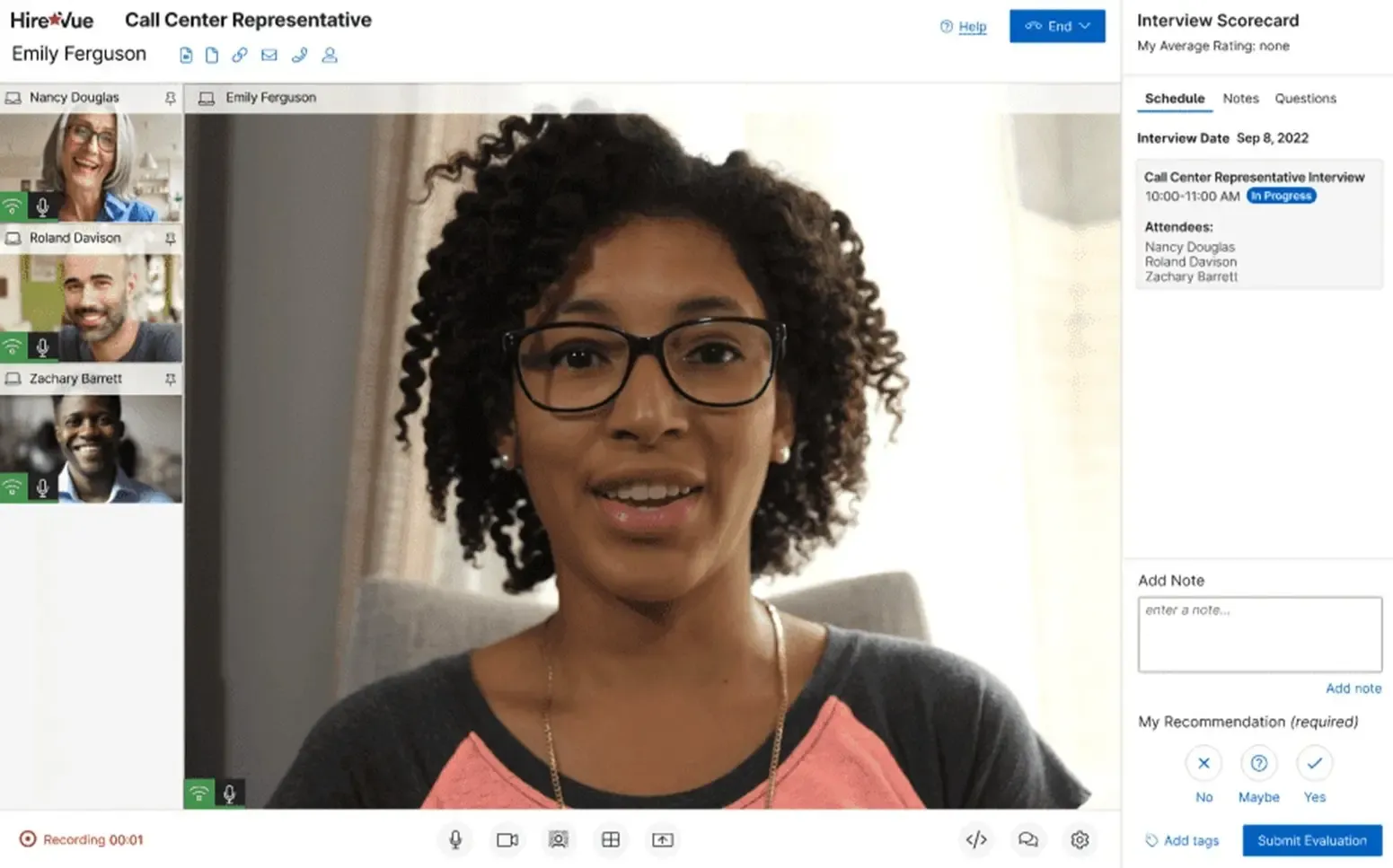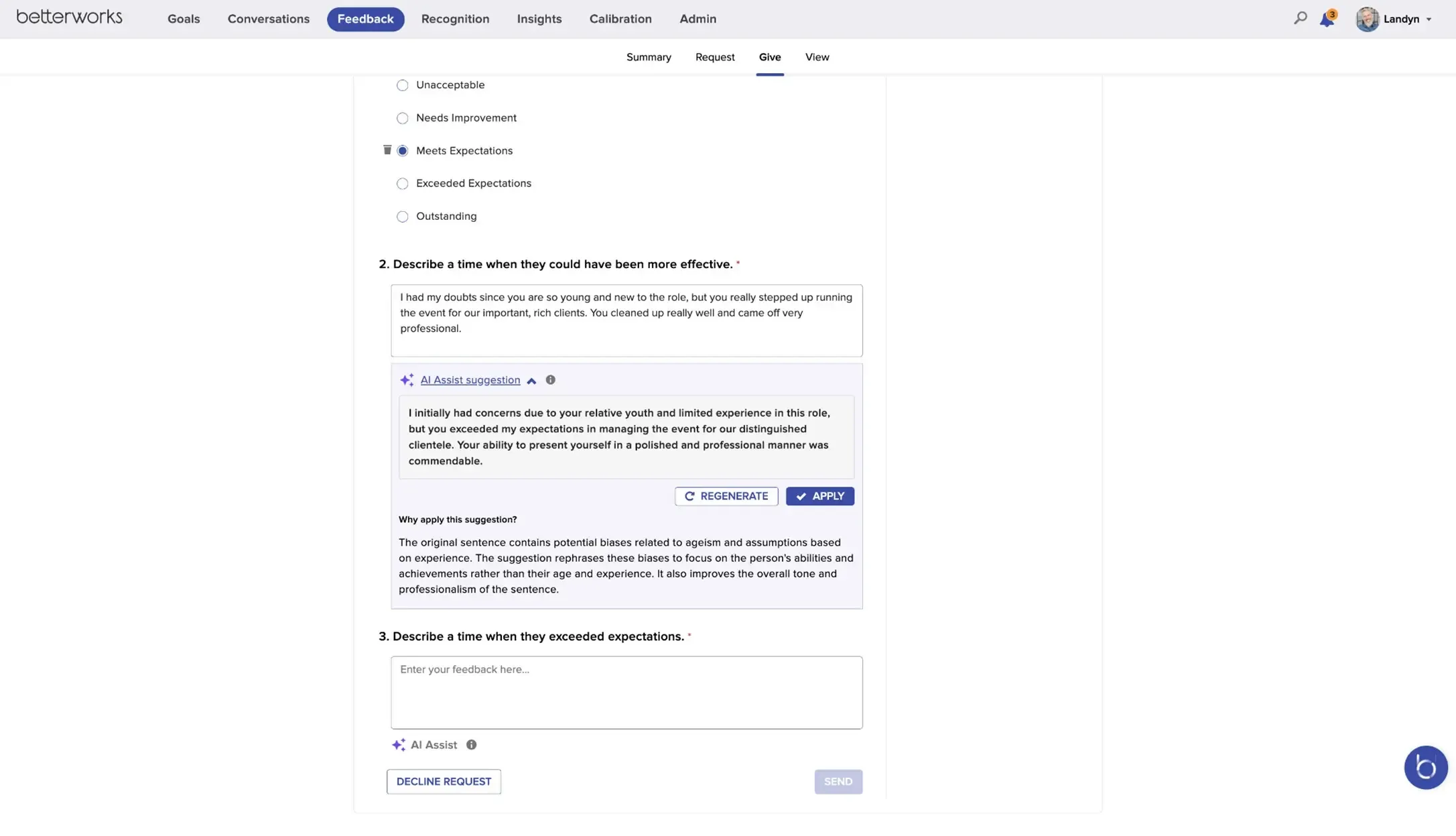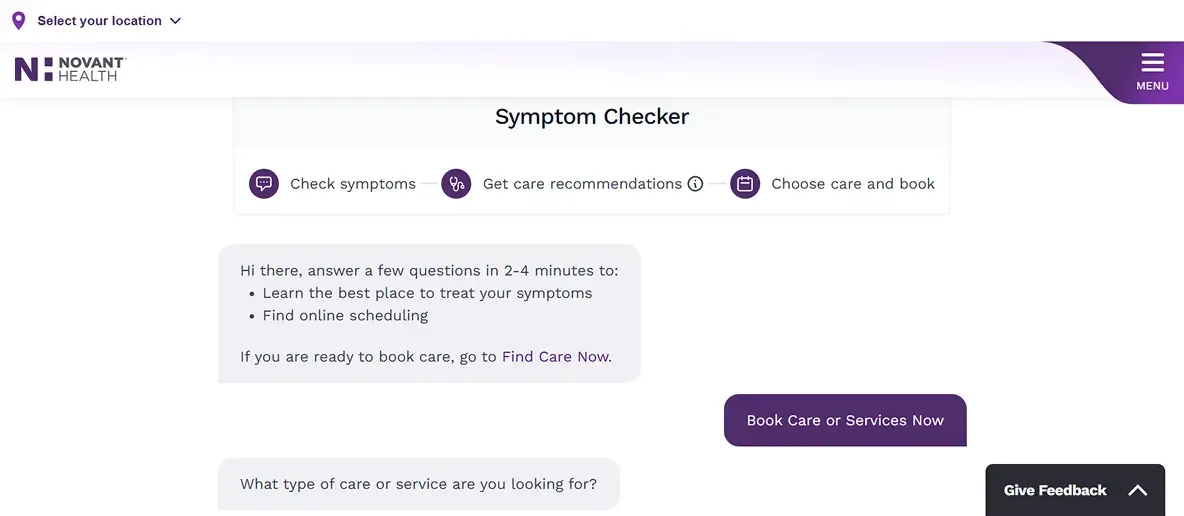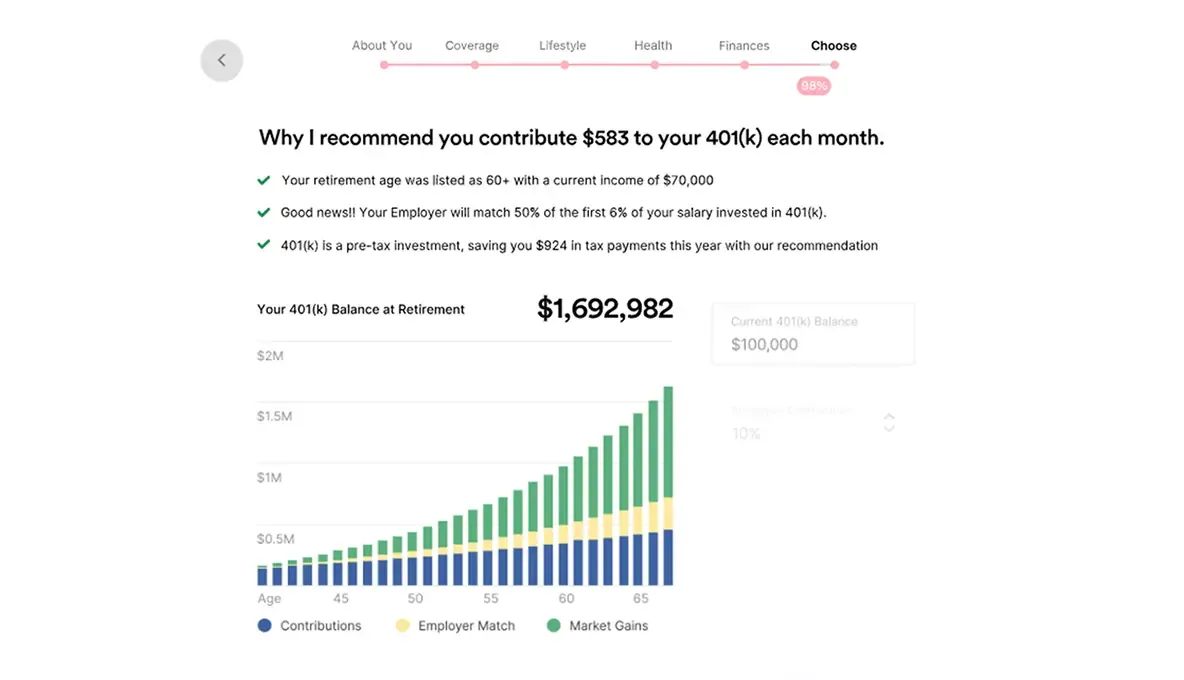Services
SERVICES
SOLUTIONS
TECHNOLOGIES
Industries
Insights
TRENDING TOPICS
INDUSTRY-RELATED TOPICS
OUR EXPERTS

September 25, 2025
From recruiting and onboarding to staff safety management, companies are increasingly propelling the adoption of AI technology in the workplace, increasing its influence on careers and the labor market.
The effects of AI on the workplace begin even before employees set foot in a new office. For example, HR solutions for headhunting automation powered by machine learning algorithms can segment and filter suitable candidates based on resumes and relevant metrics, matching their job experience with candidate profiles. Major job search platforms have already adopted this approach, including LinkedIn with its ML-based Recruiter feature for candidate ranking.
Scheme title: LinkedIn’s recommendation system architecture
Data source: LinkedIn
Nowadays, many organizations rely on AI-powered HR software to partially automate and assist with job interviews. For example, HireVue’s AI-powered video interviewing platform can analyze job applicants’ body language, use of keywords, and tone of voice and issue a score, enabling companies to make more data-driven hiring decisions. Other tools, such as Tengai, feature AI avatars to engage candidates during automated screening interviews.

Image title: The interface of HireVue’s AI-based hiring platform
Data source:
HireVue
Artificial intelligence solutions can help HR professionals analyze employee performance and provide constructive feedback. Betterworks’ performance management platform, for example, integrates AI features to gather employee performance data from past conversations with management or other sources and identify key strengths and growth areas. Based on these insights, the platform’s built-in AI copilot can generate performance reviews with goals and recommendations tailored to each staff member.

Image title: Betterworks’ performance review generation
Data source: Betterworks
The growing adoption of AI and machine learning in education can streamline employees’ professional development and foster continuous learning. For instance, popular enterprise LMS platform Docebo offers a wide range of AI-powered features to facilitate corporate training. These include personalized training content recommendations, automated lesson material generation, and auto skill assignment to match the most relevant skills to each piece of content.

The rise of AI chatbots, virtual assistants, and AI agents is paving the way for new forms of business process automation. These conversational AI solutions powered by generative AI can mimic human intelligence and communication, making them ideal for assisting human employees or freeing them from tedious clerical tasks. In this regard, US healthcare organization Novant Health adopted an agentic AI solution from Clearstep enabling self-triage and real-time appointment scheduling, which helped redirect 73% of patients to more appropriate levels of care.

Image title: Novant Health’s Symptom Checker for self-triage
Data source: Novant
Health
AI enables your staff to serve clients more efficiently and better personalize their experiences. For this, companies typically adopt AI-based CRM software featuring data-driven tools for lead scoring, customer segmentation and targeting, and sentiment analysis. For example, Heathrow Airport embraced a similar approach, using Salesforce’s AI-powered marketing features to generate more relevant and personalized promotional emails based on the preferences and travel history of each customer.

AI is being increasingly employed to ensure working environment safety and employee well-being in various operational scenarios. These applications are most common in manufacturing facilities, where computer vision systems can oversee workers and machinery to identify potential hazards. As for offices, AI-based workforce analytics platforms like Intelogos can detect signs of fatigue based on employee behavioral patterns (increased short breaks, dropping work rate, etc.) and recommend proactive interventions to prevent burnout.

Image title: Interlogos’ burnout detection tool dashboard
Data source: Interlogos
To maximize talent retention and address the individual needs of each member of their workforce, many companies have opted for an AI-driven and more tailored approach to benefits management. A prime example is the AI-based benefit enrollment platform developed by Nayya Health that provides employees with personalized benefits suggestions, including health insurance and retirement plans.

Image title: Nayya’s AI-powered benefits recommendation platform in action
Data
source: Nayya
Implementing artificial intelligence can have a profound impact on how teams interact, communicate, and achieve shared goals. Popular collaboration tools like Slack, for instance, now integrate GenAI-powered features to quickly find information across shared files via natural language queries or summarize team conversations into daily recaps to keep up with project progress.

| 54% of executives believe their companies will not survive beyond 2030 without adopting AI in the workplace at scale | |
|---|---|
| In 2025, 27% of white-collar workers said they would frequently use AI at work, up 12 percentage points from 2024. 33% of leaders use artificial intelligence frequently, twice as likely as individual employees (16%) | |
| The industries with the highest percentages of regular AI users are technology (50%), professional services (34%), and finance (32%) | |
| 16% of US workers surveyed say they use AI for at least some of their work. Another 25% don't use it much at the moment, but believe at least some of their work could be done with AI | |
| Among employees who reported using AI, the most common uses are idea generation (41%), information or data consolidation (39%), and basic task automation (39%) | |
| Among employees who have used AI chatbots for work, the most common use cases include research (57%), editing written content (52%), and drafting written content (47%) |
Scheme title: Top AI tools among employees that report using AI at work
Data source:
KPMG
| AI adoption for corporate use cases can generate $4.4 trillion in additional productivity growth over the long term | |
|---|---|
| Employees who use AI at work say it helps them save time (90% of users surveyed), focus on their most important work (85%), be more creative (84%), and enjoy their work more (83%) | |
| Nearly 31% of international C-suite leaders expect AI adoption in the workplace to help increase revenue by more than 10% over the next three years | |
| 67% of Europeans surveyed positively perceive the use of artificial intelligence and other digital technologies to improve worker safety and security | |
| 40% of C-suite leaders surveyed cited generative AI as one of the investment areas that would give their organization the greatest boost to productivity | |
| 40% of employees who have used AI-powered chatbots at work said these tools were extremely or very helpful in getting things done faster, while 29% said they were equally helpful in improving the quality of their work |
Scheme title: Top AI tools among employees that report using AI at work
Data source:
KPMG
| 60% of organizational leaders fear that their companies lack a plan and vision for implementing AI | |
|---|---|
| 52% of workers are worried about the future impact of AI in the workplace, and 32% think its adoption will lead to fewer job opportunities for them in the long run | |
| 21% of employees fear that advances in AI will raise expectations and push them to work faster or produce more | |
| 46% of leaders identify skills gaps in their workforce as a significant barrier to AI adoption | |
| 55% of leaders fear a shortage of AI talent to fill roles in the near future. In this regard, 66% of leaders say they wouldn’t hire someone without AI skills, including experience with generative AI tools like ChatGPT. At the same time, however, many companies aren’t investing in their own talent, with only 25% of businesses planning to offer training in generative AI this year | |
| 70% of employees surveyed said their organization doesn’t have clear guidelines on using AI at work. This lack of guidelines limits employee use of AI and can pose security risks | |
| 49% of employees who use AI admitted to doing so in ways that violate company policies and guidelines, such as uploading sensitive company information to public AI tools. 56% said they made mistakes in their work because of their use of AI, such as creating incorrect content using generative AI tools | |
| Most Europeans expect clear rules for the use of AI and other digital technologies, including protecting workers’ privacy (82% of respondents) and involving workers and their representatives in the design and adoption of new technologies (77%) | |
| Only 39% of C-suite leaders use trusted third-party benchmarks to evaluate their AI systems. Furthermore, those who use benchmarks typically focus on operational and performance metrics (scalability, accuracy, etc.) while ignoring ethical and compliance metrics (such as fairness, bias, transparency, and privacy) |
Adopting artificial intelligence and related technologies in suitable business scenarios can benefit both the staff and the organization as a whole, resulting in enhanced performance, cost optimization, new job opportunities, and a better work experience.
With the adoption of AI agents and other automation technologies, companies can streamline routine tasks and focus on higher-value work (such as strategic thinking), maximizing labor productivity and organizational performance while reducing operating costs.
While AI adoption can lead to job losses, it's also likely to open up new opportunities for data analysts and scientists, business development professionals, digital transformation experts, and many other specialists.
Thanks to AI-based process automation, companies can reallocate workers from repetitive tasks to more stimulating activities for greater employee engagement. Second, AI-powered analytics fosters data-driven decision-making and helps minimize human bias and its impact on careers, ensuring a fairer approach to recruitment and talent management.
While AI's reliance on data can raise concerns among regulators, its adoption can be beneficial for corporate compliance. For example, AI-enabled automation can increase reporting consistency and accuracy while lowering the number of employees who have access to sensitive information.
AI safeguards your workforce from operational risk in industrial scenarios by enabling more efficient anomaly detection and predictive maintenance and minimizing the likelihood of equipment failures and consequent disasters. It can also identify signs of fatigue or psychological discomfort in employees to suggest targeted support initiatives.
AI fosters workplace diversity and inclusivity by enabling data-driven skill assessments and blind hiring. For instance, AI-based talent intelligence platforms can rank candidates based on their actual expertise while masking identifiable attributes and protected traits (age, gender, disabilities, etc.).
Issue | Recommendations | |
|---|---|---|
Skill gap & job displacement |
Widespread automation can spark uncertainty and concern among your workforce due to skill gaps and potential
job losses. At the same time, recruiting new, AI-ready staff can be complex in a job market notoriously
affected by talent shortage.
| Start your AI implementation with a pilot group of enthusiasts. Once these early adopters have successfully implemented the AI solution into their workflows, scale it across the entire company, building on their experience and vision. Furthermore, you should involve AI experts to conduct upskilling programs and teach other employees how to properly handle AI tools. |
AI model reliability |
While superior to other tools in terms of analytics and forecasting capabilities, AI systems still don’t
achieve 100% accuracy and can be subject to bias.
| While it's near impossible to solve this problem at the technical level, it can be addressed at the business level. Either accept the error if its impact is minimal (e.g. if the system selects 3 irrelevant contacts out of 100 for a sales agent to reach out to) or modify the business process to implement a cross-checking mechanism (for instance, the AI system clearly describes why it made a certain decision to help employees validate its output). |
Data privacy & security |
AI solutions can handle sensitive information, such as financial transaction data, IP, or trade secrets,
which makes them an ideal target for cyber threats. At the same time, policymakers' growing interest in data
protection can clash with AI's data-centric nature.
| Protect your AI solution and related datasets with robust cybersecurity features such as multi-factor authentication, user activity monitoring, and data encryption. Second, adopt a solid data governance strategy, including internal policies to properly manage your data assets, and make sure your software complies with HIPAA, GDPR, or other applicable standards. |

Itransition’s consultants provide expert guidance to plan and supervise your AI project, speed up the solution’s launch, and make sure that the software delivered is fully aligned with your goals and expectations.
Our specialists build AI software designed to achieve peak performance while fully complying with your industry’s standards and regulations. Alternatively, we can modernize your current AI solution to keep pace with emerging tech trends and business requirements.
In recent years, together with other technological advances, AI has reshaped our physical and digital workplaces and is likely to bring further changes in the near future. However, its adoption can raise concerns due to potential skill gaps, along with the tension between regulations, and AI’s need for big data. To address these and other implementation challenges, rely on Itransition's expertise in AI consulting and development.

Insights
Explore key use cases, real-life examples, and trends of predictive analytics in HR, along with adoption challenges and best practices to overcome them.

Case study
Learn how we implemented a tailored talent marketplace platform Talenteer, optimizing the staffing process in a software testing company.

Service
Itransition delivers HR software solutions to help companies eliminate administrative burden, maintain regulatory compliance, and improve employee engagement.

Insights
Explore popular applications and real-life examples of robotic process automation for human resources management and learn best implementation practices.

Case study
Learn how Itransition developed an RPA bot that automates addition of new candidates to the HRM, significantly increasing process efficiency and reliability.

Service
Discover HR data analytics' top use cases, key metrics, and enabling technologies, as well as Itransition's range of related services.
Services
Industries